Analyzing survey data is one of the ways to track user activity on a website. Digital analysts love combining multiple data source that represents website user behavior. Merging quantitative and qualitative data tools (like Google Analytics and Hotjar) is a powerful way to learn user activity.
The challenge for qualitative data like surveys is that it’s hard to check patterns. The data itself doesn’t warrant a single term or data point that stands out. It’s the reason why it’s hard to create reports for it.
Another challenge with qualitative surveys is that’s hard to act on. It’s difficult for analysts or marketers to sift through an amount of data without any patterns. Parsing through the data requires some planning.
Hotjar has an article “How to analyze open-ended questions in 5 steps” on how to analyze surveys in Excel. It’s a great guide to do the job, but it still requires heavy work on data cleaning. Most digital marketers just don’t have the time.
What other methods are out there?
2 Quick Ways to Analyze Qualitative Surveys
I’m using Rand Fishkin’s recent study “734 Marketing Professionals Share How They’re Hiring in the 2020 Recession“. The study summarizes important points like the essential skills for aspiring marketers or the important marketing tactics for an organization.
I thought it would be fun to sift through the data as a good exercise and practice how to analyze surveys. The steps below are easy to follow as it requires no database setup or any coding skills.
To start, download the Google Looker Studio document into a spreadsheet. We’re going to analyze the “Advice” section where the survey questions is, “Do you have a sentence or two of advice you’d give a job-seeking marketer right now that you believe would have the most real-world impact on their ability to get hired?”

The first way to analyze qualitative survey is…
#1 – Word Cloud
Word Cloud is one of the quick ways to analyze surveys. There are free word cloud generators online. One of them is worldcloud.com.
Copy the survey data and paste all of them into the word cloud tool. Data analysis starts here when the raw data is uploaded in the word cloud tool. You might have something like the below.
Remember, the question from the survey data is: “Do you have a sentence or two of advice you’d give a job-seeking marketer right now that you believe would have the most real-world impact on their ability to get hired?”

The data shows words like “learning”, “skils”, “know”, and “understand”. We can discern that hiring managers want to look for candidates that value learning above everything else. This is a good insight if you’re a job seeker since one might be curious about what hiring managers look for in digital marketers.
At first glance, this might seem nonsense. But if you look closely there are really good data to derive from. Word clouds give “sudden” insights to the analyst because it’s a way to see patterns that would have been a hard time getting otherwise.
To clean the data in the word cloud, you can remove stop words. Stop words are words like “is, should, would, could, them, as, with, so” and others. In most cases, you wouldn’t want these stop words
Hotjar also has this capability, which is great. It’s built-in word cloud function automatically parses through the data and create the world cloud fast. What’s good about Hotjar’s word cloud, is that it doesn’t contains stop words.
#2 – Text Analyzer
Another great way to analyze qualitative surveys is through text analyzer tools. These tools parse through raw data and create word, phrase, and sentence occurrences to help uncover text patterns.
For this example, we’ll use online-utility.org. There are other free tools out there and you are free to use you’re comfortable with. Essentially their uses are the same. These methods avoid manual work on data cleaning.
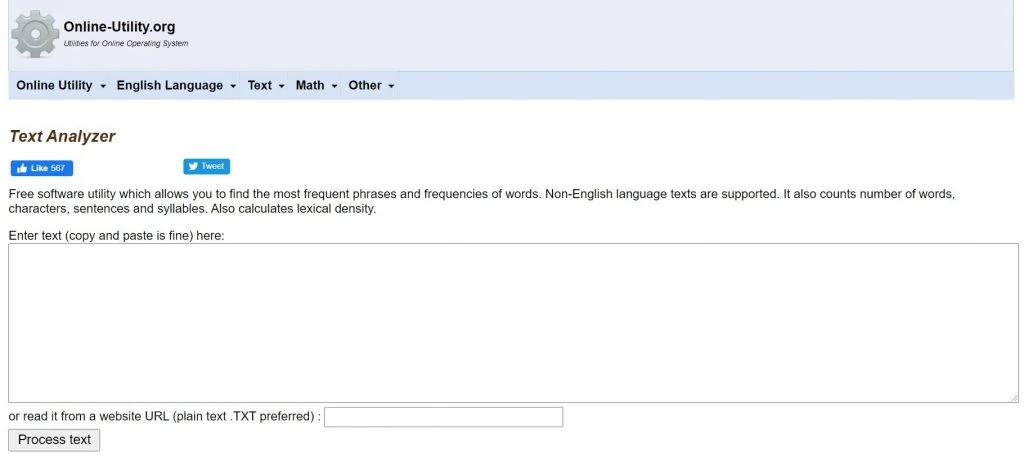
Going back to the survey, copy and paste the raw data into the tool. Again, the survey answers “Do you have a sentence or two of advice you’d give a job-seeking marketer right now that you believe would have the most real-world impact on their ability to get hired?”
For this example, the tool gathers 2 to 7-word occurrences, which is useful enough for data analysis.
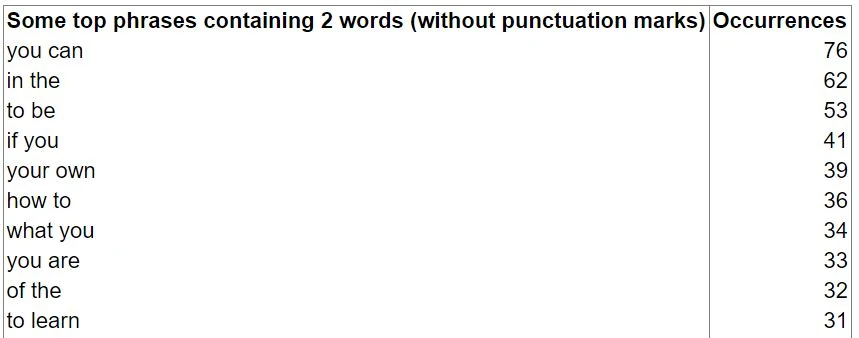
These are the Top 10 2-word occurrences. From this data, it might seem there’s no concrete data, but it’s normal to have an “exploration phase” in these data points. However, there is a mention of “to learn”.
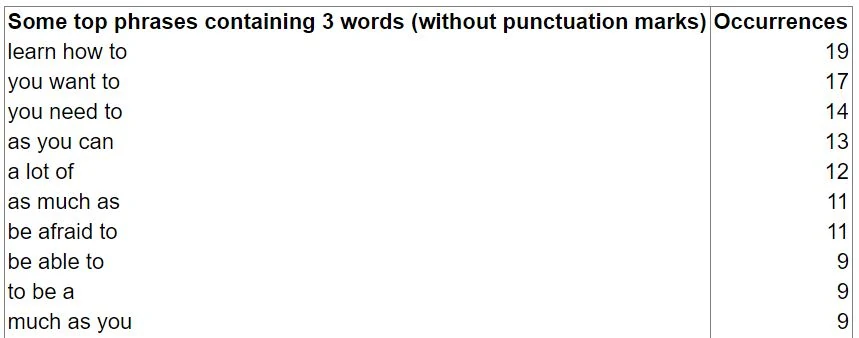
These are the Top 10 3-word occurrences. Now we see “learn how to”, “as much as”, and “much as you”. This might mean “learning as much as you can” to get hired.
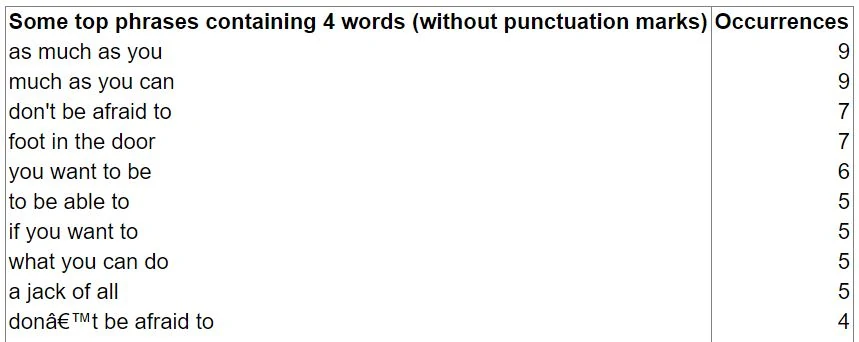
These are the Top 10 4-word occurrences. Now we see “don’t be afraid to” and “foot in the door”. An interesting phrase is “a jack of all”. The insight would be don’t be afraid to put your foot in the door to get hired.
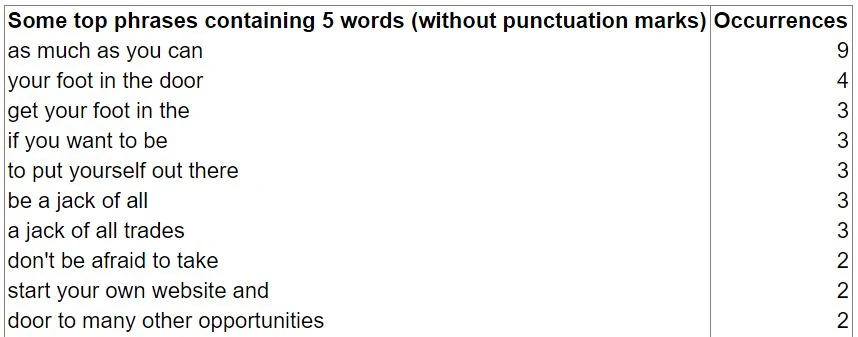
These are the Top 10 5-word occurrences. Now we see “as much as you can” and “to put yourself out there”. New pieces of insights now appear like “be a jack of all”, “a jack of all trades”, and “start your own website”. It’s coming along where the the data is going.
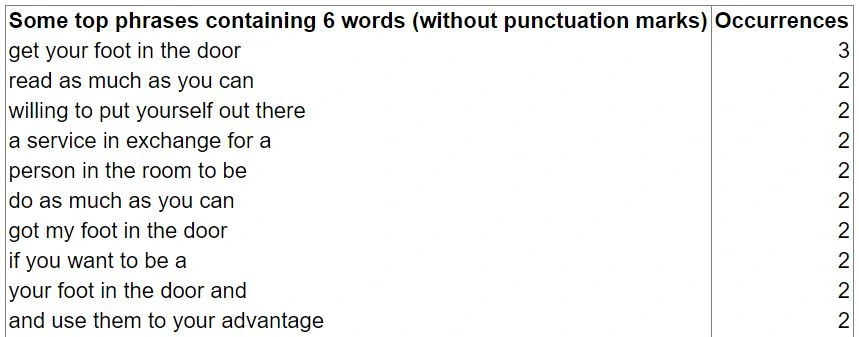
These are the Top 10 6-word occurrences. Now we see “read as much as you can”, “willing to put yourself out there” and “do as much as you can”. Reading as much as possible is a new insight on how to get hired as a digital marketer.

Finally, this is the only 7-word occurrence and it occurred twice: “be a jack of all marketing trades”
From this simple data analysis, the key takeaways to get hired in marketing, one should…
- Be a jack of all trades
- Continuously learn
- Read as much as you can
- Don’t be afraid
- Put yourself out there
When you consider the top 15-word occurrences in the world cloud, these are the insights that might occur…
- Build your own website
- Always practice your marketing skills
- Build relationships in the industry
- Follow experts on social media
This is an example of how text analyzer tools help to analyze survey data without investing too much time on programming, any database management, or bothering a web analyst. It may not be the most comprehensive data analysis an advanced person might expect, but it leads to the right direction in knowing more about your customers.
Conclusion: Analyzing Survey Data is Not as Hard as It Looks
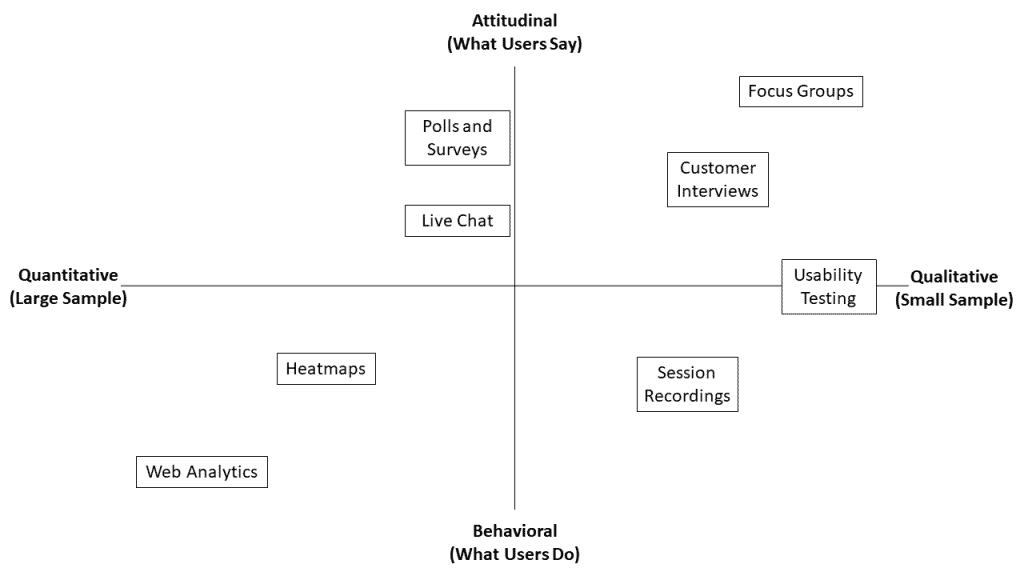
Word clouds and text analyzers are used in other qualitative data sources like live chat. The approach is the same; collecting open-ended and qualitative data for analysis.
You can also this these techniques for forums and message boards data. When you scrape data from these pages, upload them in word clouds and text analyzers for insights.
Analyzing survey and poll data is important to know user feedback. It’s a major part of the attitudinal data source or “what users say” data. These types of analyses show empathy to your users and customers.
The more you know about your users, the more value you have for them. The more value you have more them, the more you achieve business growth.

